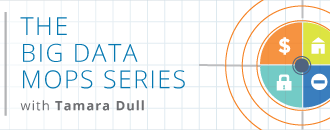Few businesses rely on big data when it comes to their marketing. But those who do rely on it to outsmart, outmatch, and outdo their competitors. Big data can transform any marketing strategy. It pinpoints customers needs, wants, and desires. The Evolution of Marketing Marketing before the invention of the Internet was cumbersome. It required considerable physical effort to reach customers. It was much harder to persuade them to buy. It took longer to convince them of the value of your products. Telephone calls, faxes, letters and air travel were the main ways of reaching customers. By comparison, marketing is much more fluid today. Today, marketing is almost automated. A marketer can reach people all over the world around the clock with a website. It’s like the transition from stick shift to automatic. The traditional ways of marketing still exists. Those who rely on it do not do as well as those who have embraced the tremendous reach of the Internet. Many businesses, today, use both to gain an edge. A television commercial usually shows a website where people can follow up. A radio ad will quickly tell listeners what website to go to for more information. The websites allow the merchant to continue the sales conversation. The media gets people’s attention, but the website often closes the sale. Technology has changed the marketing landscape. It’s now faster, easier, and more effective. There is more reach. There is a bigger audience. And all marketing campaigns are much more targeted. Many small companies stayed small because of the high cost of traditional media. It was easy for big businesses, with their large budgets, to dominate their industry. Today, the inexpensive nature of online marketing has leveled the playing field. An attractive website loaded with the right keywords can become a cash-generating machine. A Fly in The Soup Still, amidst all this good news, there is also some bad news. There is much more competition. It’s now much harder to make a brand stand out. Today many brands compete for attention. It has been challenging for marketing departments to make memorable impressions on consumers. The signal to noise ratio has dwindled. Amid the commercial noise, it’s hard to send out a clear signal. The solution to this dilemma is to personalize services by understanding consumers better. Companies that can give more people more of what they want can prosper. How is this done? By finding out what consumer want. Big data can provide this information. Big Data Makes Offers More Relevant Companies who use big data smoke the competition:
- They can manufacture more customer-centric products.
- They can provide more consumer-friendly services.
- They can isolate their target market from the general public. This makes their leads much more likely to convert to paying customers.
- They can address their customer’s needs.
In essence, then, big data can transform a marketing department.
- It allows a marketing department to close the competitive gap. It allows a marketing department to increase brand awareness.
- It allows marketing department to reach the right customers at at the right time.
- It allows a marketing department to create ads that appeal to customer’s core desires.
How to Market With Big Data The way to incorporate big data into marketing strategies is to use marketing analytics. The right software can sift and sort through a massive amount of data. It can search through information collected from many sources. A careful assessment of metrics can provide many insights. Here are some examples of relevant insights: 1. Insight into a customer’s purchasing behavior. · Do they prefer bargains to high ticket items? · Do they prefer to pay in one lump sum, with the promise of saving on the total cost? · Do they prefer to pay in installments even if they have to pay more in the long run? 2. Insights about emerging trends. 3. Insights about unmet needs in the marketplace. These insights provide evidence-based decisions. 7 Ways To Use Data To Win Over Customers How can this data be better used to get more customers? How can it be better used to engage and build long-term customer relationships? Here are 7 suggestions: 1. Find partners with that offer complementary products. This creates a win-win situation for everybody. Instead of rivalry, there is cooperation. Many brands offering different products can work together to fulfill more customer needs. 2. Encourage more user-generated content. Users spend more time with content created by their peers than by a merchant. Starbucks, for example, has a Facebook page where users share their coffee experiences. People pay more attention to other people’s recommendations and opinions than to a merchant. 3. Find and build relationships with influencers in your market. Again, like encouraging user-generated content, conversions increase. The psychology is the same. People pay more attention to what someone says rather than what the merchant says. 4. Offer content or products to help customers solve their problems. 5. Create products and services based on what customers say they want. This is much easier to sell than selling what you think they might want. 6. Personalize your marketing materials. You could design business cards, brochures, and samples that appeal to their interests. You could create a storefront that completely engages them. You could design a custom box for your product. These small things will thrill your audience and increase customer loyalty. 7. Tailor traditional advertising to speak directly to customers. Start talking to them in their own language. For instance, an intellectual audience wants an explanation of why something works. They want to know all the ingredients and how they work. Conversely, this approach would result in low sales if pitched to an emotional audience. They would find it boring. Sales will go up if you address how quickly they can reap the benefits the product offers. Using big data, you can understand your audience better. This approach helps you talk to them in a way that they will respond to your offer.







